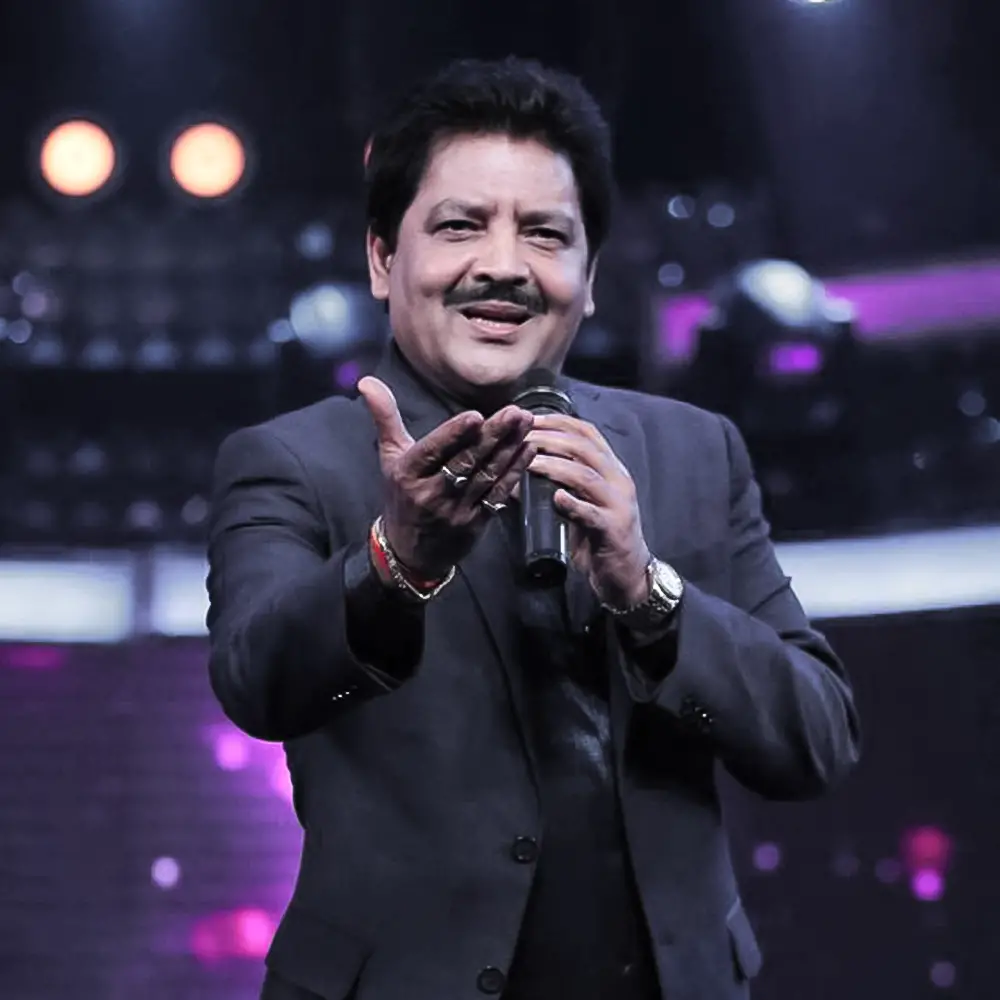Introduction
Ever wondered how a singer can become a style icon? Meet Udit Narayan, the legendary Indian playback singer whose soulful voice has charmed millions for decades. From blockbuster Bollywood hits to his elegant outfits, Udit Narayan is more than just a musical genius—he’s a trendsetter who’s left a mark on South Asian fashion. His timeless style, blending traditional Indian attire with modern flair, inspires fans across India, Pakistan, and beyond. Whether you’re a music lover or a fashion enthusiast, Udit’s journey offers something for everyone. Let’s dive into his life, music, and iconic fashion to see why he’s still a superstar today!
Udit Narayan’s Musical Journey: A Quick Overview
Early Life and Rise to Fame
Udit Narayan Jha was born on December 1, 1955, in Baisi, Bihar, India, to a Nepali father and Indian mother. Growing up in a modest family, he found his passion for music early, inspired by his mother, a folk singer, and legends like Mohammed Rafi and Kishore Kumar. Udit started singing for Radio Nepal in the 1970s, performing Maithili and Nepali folk songs. In 1978, he moved to Mumbai on a scholarship to study classical music, setting the stage for his Bollywood breakthrough. His big break came in 1988 with Qayamat Se Qayamat Tak, where his song “Papa Kehte Hain” became a massive hit, earning him his first Filmfare Award.
Notable Songs and Accomplishments
Udit’s voice has defined Bollywood’s golden era. He’s sung over 25,000 songs in 36 languages, including Hindi, Nepali, Tamil, Telugu, and Bengali. Some of his iconic tracks include:
- “Mehndi Laga Ke Rakhna” (Dilwale Dulhania Le Jayenge)
- “Pehla Nasha” (Jo Jeeta Wohi Sikandar)
- “Taal Se Taal Mila” (Taal) His duets with Alka Yagnik and collaborations with stars like Shah Rukh Khan and Aamir Khan are unforgettable. Udit’s versatility and emotional depth made him a favorite for romantic and upbeat songs alike.
Awards and Recognitions
Udit’s talent has earned him numerous accolades:
- 4 National Film Awards (3 for singing, 1 as a producer)
- 5 Filmfare Awards with 20 nominations
- Padma Shri (2009) and Padma Bhushan (2016) from the Government of India
- Prabal Gorkha Dakshin Bahu (2001) from the King of Nepal He’s the only male singer to win Filmfare Awards across three decades (1980s, 1990s, 2000s). His songs feature in BBC’s “Top 40 Bollywood Soundtracks of All Time,” proving his lasting impact.
Udit Narayan’s Signature Fashion and Style Evolution
From Traditional Attire to Modern Statements
Udit Narayan’s fashion journey mirrors his musical career—classic yet adaptable. In the 1980s and 1990s, he embraced traditional Indian attire like kurtas and sherwanis, often seen in music videos and live performances. His simple yet elegant kurtas in soft colors like cream and pastel blue reflected his humble roots. As Bollywood evolved, so did Udit’s style. By the 2000s, he started blending traditional looks with modern touches, like tailored blazers over kurtas or stylish scarves paired with ethnic outfits.
Iconic Looks in Music Videos and Films
Udit’s appearances in music videos showcased his charm. In Qayamat Se Qayamat Tak’s “Papa Kehte Hain,” he wore a classic white kurta-pajama, exuding youthful simplicity. For Dilwale Dulhania Le Jayenge’s “Mehndi Laga Ke Rakhna,” his embroidered sherwani added a regal touch, perfectly matching the song’s festive vibe. Even in Nepali films like Kusume Rumal (1985), where he acted and sang, Udit’s traditional outfits stood out. His ability to make simple attire look sophisticated made him a style icon for everyday fans.
Fashion’s Role in Shaping His Public Image
Udit’s fashion isn’t just about clothes—it’s about personality. His outfits reflect his approachable, down-to-earth nature, making him relatable to fans across generations. Whether performing at concerts or judging music shows, Udit’s style balances comfort and elegance, reinforcing his image as a timeless star. His choice of vibrant yet understated colors, like maroon or navy, appeals to both young and older audiences, cementing his role as a cultural icon.
Udit Narayan’s Impact on Indian and Pakistani Fashion Culture
Crossover Appeal Across Borders
Udit Narayan’s music and style transcend borders, especially in Pakistan, where Bollywood songs are wildly popular. His soulful voice and traditional attire resonate with Pakistani audiences who share similar cultural roots. Songs like “Pehla Nasha” and “Taal Se Taal Mila” are staples at weddings and events in both countries, and Udit’s kurtas and sherwanis inspire men’s fashion choices. His concerts in Dubai and other global hubs often attract Pakistani fans, showcasing his universal appeal.
Contribution to South Asian Fashion Trends
Udit has played a subtle but significant role in popularizing traditional South Asian attire. His kurtas and bandhgalas in music videos encouraged men to embrace ethnic wear for festive occasions. Designers today draw inspiration from his clean, elegant looks, incorporating similar silhouettes into modern collections. Udit’s style also promotes cultural pride, encouraging younger generations to wear traditional outfits with confidence. His influence is evident in the rise of kurtas as casual wear in urban India and Pakistan.
Collaborations and Fashion Events
While Udit is primarily a singer, his appearances at cultural and award shows highlight his fashion influence. As a jury member for the Global Indian Music Academy Awards (2012) and Mirchi Music Awards (2015), he wore sophisticated sherwanis and suits, blending tradition with modernity. His performances at concerts, like those with his son Aditya Narayan, often feature coordinated ethnic outfits, inspiring father-son fashion trends. Though he hasn’t collaborated directly with designers, his iconic looks have indirectly shaped South Asian menswear.
What We Can Learn from Udit Narayan’s Fashion
Tips for Adopting His Timeless, Elegant Style
Want to dress like Udit Narayan? Here’s how:
- Embrace Simplicity: Choose clean, well-fitted kurtas in neutral or pastel shades for a classic look.
- Add Subtle Details: Opt for outfits with minimal embroidery or textured fabrics to elevate your style without being flashy.
- Mix and Match: Pair traditional kurtas with modern accessories like loafers or a sleek watch for a contemporary twist.
- Focus on Comfort: Udit’s outfits are always comfortable, perfect for long events or casual outings.
Incorporating Traditional Attire
Traditional attire doesn’t have to be reserved for weddings. Try these ideas:
- Wear a short kurta with jeans for a casual day out.
- Choose a bandhgala jacket for semi-formal events, paired with churidar or trousers.
- Experiment with colors like ivory or deep green, which Udit often wears, to stand out.
Combining Comfort and Style
Udit’s secret is balancing comfort with elegance. Opt for breathable fabrics like cotton or linen for kurtas, especially in hot climates. Ensure your outfits are tailored to fit well, as loose or overly tight clothes can ruin the look. Accessories like a pocket square or ethnic juttis can add flair without overwhelming the outfit.
Buying Guide: How to Build a Wardrobe Inspired by Udit Narayan
Building a wardrobe inspired by Udit Narayan is easy and affordable. Here’s a guide to get started:
Recommended Clothing and Accessories
- Kurtas: Long or short cotton kurtas in white, beige, or pastel shades.
- Sherwanis: Embroidered sherwanis for weddings or special events.
- Bandhgalas: Tailored bandhgala jackets for formal occasions.
- Accessories: Ethnic juttis, pocket squares, and simple watches.
- Bottoms: Churidar, straight pants, or slim-fit jeans to pair with kurtas.
Comparison Table: Traditional vs. Modern Outfits
| Aspect | Traditional Outfits | Modern Outfits |
|---|---|---|
| Examples | Kurta-pajama, sherwani, bandhgala | Kurta with jeans, blazer over kurta |
| Occasion | Weddings, festivals, cultural events | Casual outings, semi-formal events |
| Price Range | $30-$150 (depending on embroidery) | $20-$100 (budget-friendly options) |
| Styling Tips | Pair with juttis, add a dupatta for flair | Wear with loafers, add a watch for modernity |
| Where to Buy | Local boutiques, Myntra, Amazon India | Online stores, FabIndia, Manyavar |
Where to Shop
- Online Platforms: Myntra, Amazon India, Flipkart, and Manyavar offer a wide range of kurtas and sherwanis.
- Local Boutiques: Visit markets like Chandni Chowk (Delhi) or Johari Bazaar (Jaipur) for custom-made ethnic wear.
- Budget Options: Brands like FabIndia and W for Men offer affordable kurtas starting at $15.
Budget-Friendly Tips for Students
- Look for sales on online platforms during festivals like Diwali or Eid.
- Buy versatile pieces, like a white kurta, that can be styled multiple ways.
- Shop second-hand ethnic wear from thrift stores for unique finds.

